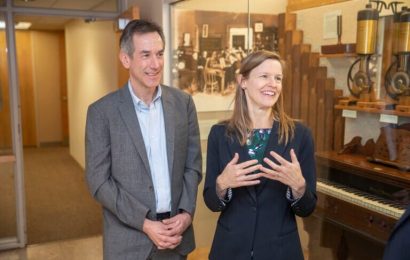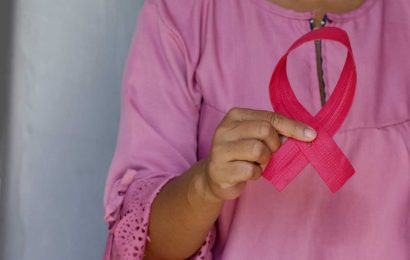I just had an inkling. It felt like a cold but slightly worse. There was something a bit off about it,” Roseworn told HIMSS Insights.
The 52-year-old company director was tested a day later and spent the next three and a half weeks “hospitalised” in his home thanks to the remote care provided by one of the nation’s major health facilities, Royal Prince Alfred Hospital (RPA) in Sydney.
“There were a few days there where it felt like I had a weight sitting on my chest. I wasn’t wheezing, it just felt hard to expand my chest for a few days,” Roseworn, who is asthmatic, said. “And I had a pretty bad dry cough so it sounded antisocial.”
Keeping patients safely isolated while monitoring their symptoms, RPA’s “virtual hospital” has been key to efforts to flatten the curve.
“I couldn’t believe the level of care I was getting,” Roseworn said. “I was truly gobsmacked.”
RPA Virtual was initially launched in February to care for people with cystic fibrosis and palliative care patients – then the COVID-19 crisis escalated.
“We very quickly had to redesign. So within a week, we did that,” director of RPA Virtual Miranda Shaw said. “And we were able to support the discharge of six patients from the intensive care unit here at RPA to home because we were able to provide that safe level of care.”
Using pulse oximeters to measure oxygen saturation levels and heart rates, and armpit patches to track temperature, data is transmitted via an app on patients’ phones to RPA Virtual for 24/7 monitoring. Twice daily video-consultations allow clinical staff to monitor coronavirus sufferers’ physical and mental health.
Of the 475 COVID-positive patients monitored by RPA Virtual by the end of May, only 51 needed to attend the bricks-and-mortar hospital when their conditions had changed. Eighteen of those were admitted, with 15 placed in ICU. One 83-year-old patient with comorbidities died in hospital after rapidly deteriorating.
So high has the quality of care been for RPA Virtual patients across Australia, it has led to a boost in support from clinical staff.
“There was a level of cynicism about the effectiveness of virtual care and susceptibility and how safely it could be delivered,” Shaw said. “But thanks to COVID, in many ways we’ve really managed to turn that around. And now we have enormous support and we can see the cultural change that’s happening across the system.”
Technology has been integral to Australia’s response to the disease, with federal funding fueling a dramatic uptake in telehealth nationally and the swift roll-out of electronic prescriptions. In April, the COVIDSafe contract tracing app was released.
By 1 June, there had been 7,195 infections and 103 deaths nationwide, with just 12 new cases detected in the previous 24 hours.
Chief information officer of the Sydney Local Health District, Richard Taggart, who leads the team behind RPA Virtual, said while innovations had been adopted at speed to help fight COVID-19, technology was already being integrated to help contend with growing healthcare pressures.
“Healthcare has been lurching towards this crisis of sustainability for so many years where we have more demand than we can possibly deal with,” Taggart said. “And we can’t just keep building new hospital beds and opening new hospitals because we’re not going to have the resources to fill them and provide the care that we need to.”
For RPA, the coronavirus has fast-tracked the use of tech to ease those burdens, introduce efficiencies and aid in quality care.
“If I look at my digital strategy, things that I thought we might get to in year five of that strategy, we’ve done in 10 weeks.” Taggart said. “Things that you would expect to see in the future have now arrived, and they are being used and they are a part of everyday life. It’s been quite an extraordinary experience.”
This article was first published in the latest edition of HIMSS Insights, COVID-19 and Beyond. Healthcare IT News and HIMSS Insights are HIMSS Media publications.
Source: Read Full Article


